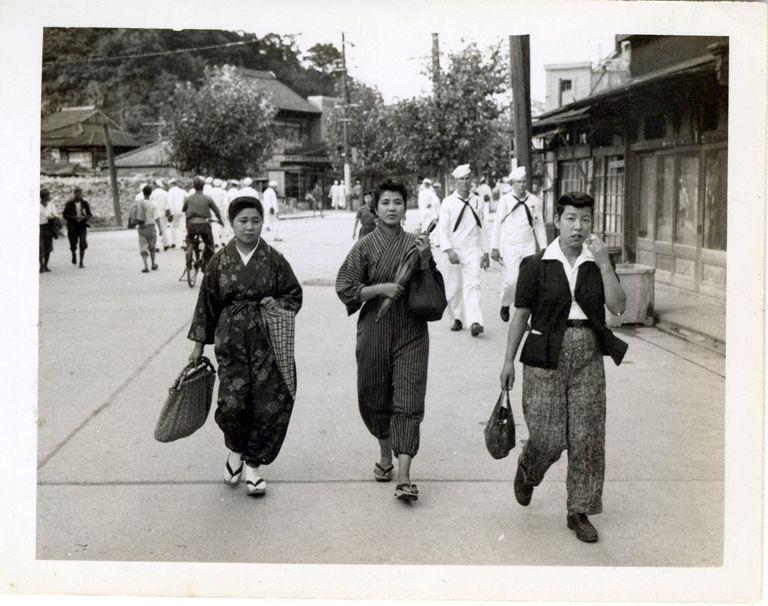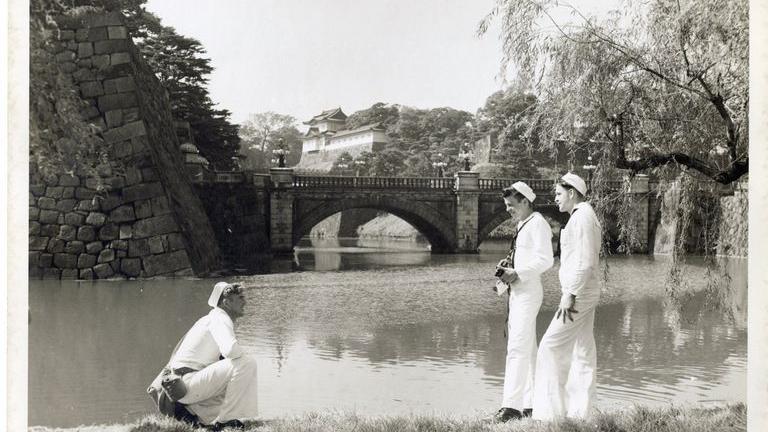The news came crackling over the ship’s loudspeakers—Japan had surrendered. For the men of the USS Yorktown (CV-10), it was the moment they had barely dared to imagine. The summer of 1945 had been relentless: the atomic bombings of Hiroshima and Nagasaki in early August, the Soviet Union’s sudden entry into the war against Japan, and the mounting sense that the conflict’s end was finally near. On August 15, word reached even the farthest corners of the Pacific— Japan had accepted the terms of surrender. The world called it Victory over Japan Day, VJ Day. Onboard the Yorktown, it felt like a long-held breath had finally been released, with the war that had consumed their youth, their strength, and far too many of their shipmates, finally over.
The formal surrender took place on September 2, aboard the USS Missouri in Tokyo Bay, broadcast to a world hungry for peace. Two weeks later, on September 16, the Yorktown sailed into that same bay, this time not for battle, but for liberty. The sailors, who had known Japan only as an enemy seen through the lens of reconnaissance photos or the sights of a gun, now stepped ashore into a city bearing the scars of war.
They were given clear orders: cause no trouble. What they found instead was a shared curiosity—a quiet acknowledgment that the fighting was over. In those brief days of liberty, trouble was the last thing on their minds. They wandered through the Imperial Japanese Gardens, marveled at the architecture, shared drinks with strangers who, just weeks before, had been enemies. In back rooms and open markets, they bartered for souvenirs— swords, helmets, flags—small tokens to prove to themselves, and to those waiting at home, that they had lived through this history.

Among them was Photographer’s Mate 3/ c Warren Vernon “Bill” Tucker. Just a year earlier, he had talked his way into a transfer to the Yorktown’s photo lab, despite having never held a camera in any serious way. War had made him a photographer, but peace gave him the chance to capture something different: the bay, and the faces of a people rebuilding. His lens froze moments the history books would overlook the laughter, the quiet, the relief.
On October 1, 1945, the Yorktown sailed out of Tokyo Bay, bound for home. Below decks, seabags were stuffed with photographs, keepsakes, and the unspoken weight of memory. These artifacts are more than relics; they are fragments of the life lived in those uncertain days, and a memorial to those lost in a hard-fought war.
The new Homeward Bound Exhibit takes a step back into these pivotal moments in history. The exhibit highlights objects and images that tell the sailors’ story—not just of a war ended, but of a homecoming earned, and the promise to remember. See the new Homeward Bound Exhibit, now through December, in Hangar Bay I aboard the USS Yorktown.

